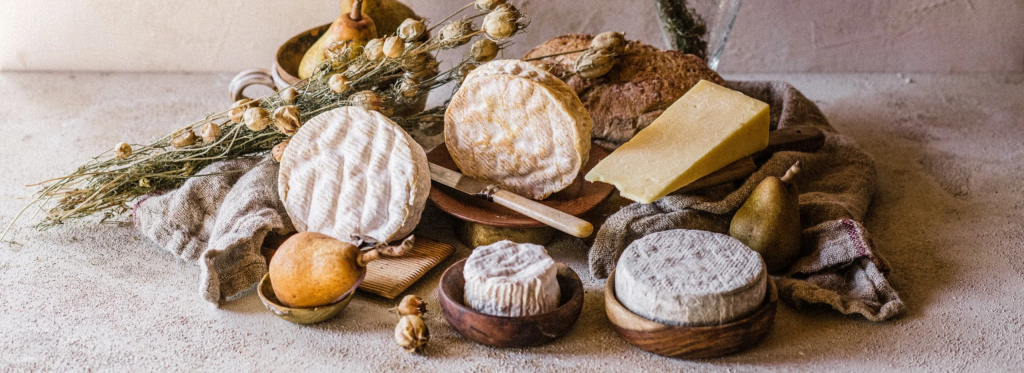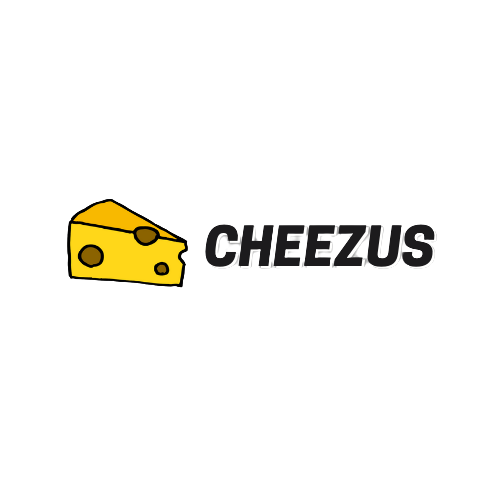Welcome to the Cheezus Christmas cheeseboard selection, a sacred space where all the world’s cheeses are gathered together in harmony. No matter if it’s an intimate gathering of family and friends or a large group of strangers brought together by fate, this table is for everyone who wants to spend time with loved ones over slices of cheese. For those unfamiliar with the concept, let me explain: A proper Christmas cheeseboard is a selection of delicious dairy products that can be paired with wine and complementary foods like breads and crackers.

Selecting cheeses
The first thing to remember is that the cheeseboard should be a selection of different types of cheese. You should aim for an even balance between strong, mild and soft cheeses; don’t just go for one type or another.
For example:
- Strong: Cantal (aged), Lincolnshire Poacher, Stilton
- Mild: Morbier, Caerphilly, Comte (aged 36 months if you can get it)
- Soft: Camembert, Soumaintrain, Mont d’Or a la Coupe
Pairing wine with cheese
Once you’ve selected your cheeses, it’s time to think about how you’ll pair them with wine. While pairing cheese and wine may seem like an impossible feat, there is a science behind it! There are two schools of thought when it comes to pairing wine and cheese:
The first school of thought suggests that red wines should be paired with hard cheeses like cheddar or gruyere; white wines should be matched with soft creamy cheeses like brie or camembert. This method has been used for hundreds of years—and there’s no reason not to stick with tradition.
The second method takes into account the different styles of wine as well as the type of cheese being served. For example, if you’re serving a robust Cabernet Sauvignon (which usually pairs well with beef) then your next course could be something stinky such as Comte de Champagne or Époisses de Bourgogne—both French cow breeds known for their pungent aroma that pairs nicely with this kind of hearty red wine.
There are many ways to pair food and drink together but in general people tend toward one method over another based on personal preference and experience.”
Picking sides and nibbles
Once you’ve chosen your cheeses and wine, it’s time to pick out some food pairings. Your board should include something sweet, something sour, and something salty (unless you’re hosting a vegetarian). Some good options include:
- Fruit. Apples sliced thin or cored and cut into wedges are always a hit. You can also try pears and figs (though they may be difficult to find in December). If you want something more unusual than dried fruit, try crystallized ginger—it adds an unexpected burst of flavor!
- Nuts or seeds. Pistachios are traditional for Christmas tables but cashews or walnuts also make great additions if you want another crunchy texture on your cheese platter. Hazelnuts are nice as well; just be careful because they’re expensive!
- Crackers and breads with dried herbs sprinkled on top will give guests who don’t feel like eating anything too decadent a lighter option for nibbling together with the cheeses at hand

Serving condiments
While the cheeses themselves may be the star of your Christmas table, that doesn’t mean you should neglect the accompaniments. While you can always serve cheese with crackers or cheese biscuits, there’s something about a special variety of bread or cracker that makes eating cheese even more delicious. If you’re interested in making your own condiments (or just want to try new things), here are some ideas:
- Fruit jam and honey to complement soft bloomy rind cheeses like brie and camembert
- Mustard for hard aged cheddars such as stilton or gouda
- Pickled onions or pickles (cornichons) for blue cheeses like roquefort
Conclusion
I hope you’ve found this guide useful. If you’re still unsure what cheeses to choose, I’m sure we can help! Get your Christmas cheese board started and remember to support your local cheese mongers, delis, producers and artisans during your quest for the ultimate cheese board.
